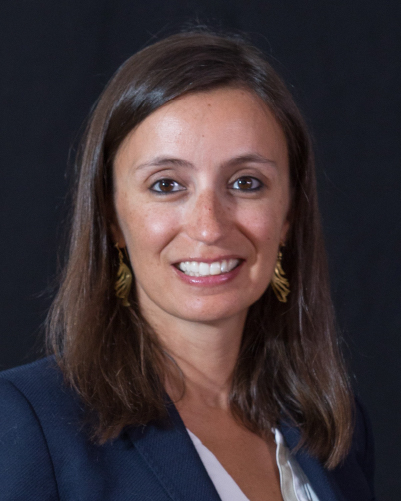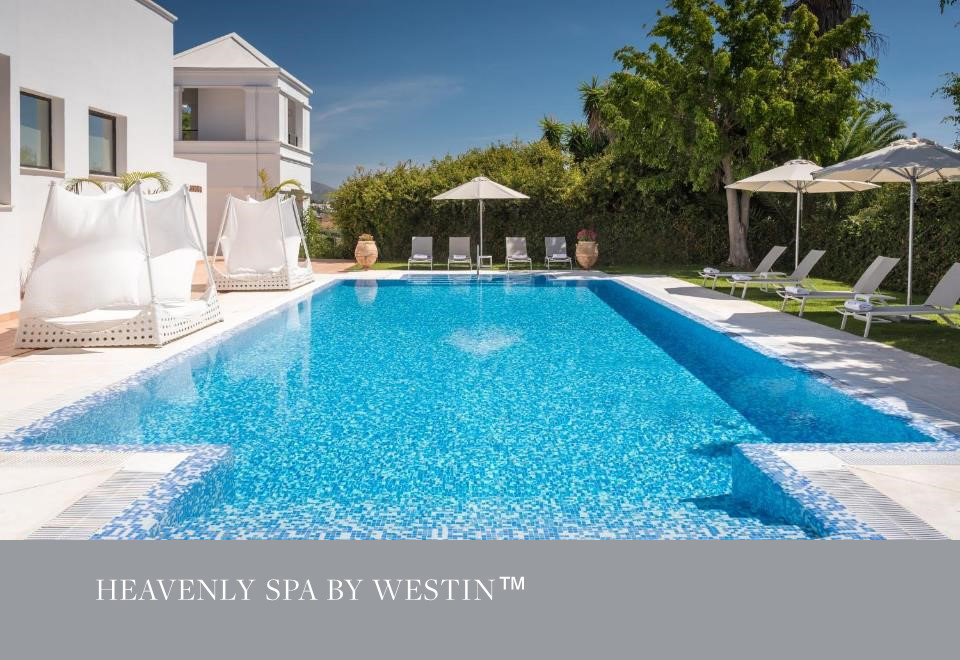
11-13 May – 2023
Workshops & Network
LEARN PRACTICALLY AND
THEORETICALLY HOW THE EAO
APPROACHES CURRENT “HOT TOPICS”
IN IMPLANT DENTISTRY

3 DAYS OF HANDS-ON TRAINING
IN MARBELLA, SPAIN.
SURGICAL AND
PROSTHETIC CONCEPTS:
HOW TO DO IT THE EAO WAY?
LIMITED NUMBER OF SEATS • LIMITED NUMBER OF SEATS • LIMITED NUMBER OF SEATS • LIMITED NUMBER OF SEATS • LIMITED NUMBER OF SEATS • LIMITED NUMBER OF SEATS • LIMITED NUMBER OF SEATS • LIMITED NUMBER OF SEATS • LIMITED NUMBER OF SEATS • LIMITED NUMBER OF SEATS • LIMITED NUMBER OF SEATS • LIMITED NUMBER OF SEATS • LIMITED NUMBER OF SEATS • LIMITED NUMBER OF SEATS • LIMITED NUMBER OF SEATS • LIMITED NUMBER OF SEATS • LIMITED NUMBER OF SEATS • LIMITED NUMBER OF SEATS
LIVE
DISCUSSION
with
JOSÉ MANUEL
NAVARRO
ANY QUESTIONS ?
Contact us or
join us for the live discussion with José Manuel Navarro to ask all your questions about the programme.
More information coming soon
IN THE PROGRAMME

9 practical workshops
with 7 leading experts in implant dentistry

Various activities
to enjoy

Various activities
to relax

Exclusive networking with 80 international participants
3 WORKSHOPS PER DAY
DAY 1
DAY 2
DAY 3
# Worshop 1
Management on digital tools; Prosthetically driven 3D planning. Interdisciplinary guided dentistry and 3D printing (computers & software)
José Manuel Navarro & Pablo Ramirez
Digital dentistry is a reality in our daily practice but at the same time we must have the analogic and biologic principles as a synergistic combination to have predictability in our clinical results.
During the workshop, we will cover all the steps to understand the fundamentals of data acquisition with the prosthetic part always in mind, the surgical planning with the merge of the data with 3D softwares and the manufacture phase with 3D printers with and overview of the different resins and guides that we ca, produce either in house or outsourcing.
LEARNING OBJECTIVES
• Prosthetically Driven Implant Dentistry guided by Dental Technology
• Importance of correct data acquisition and 3D softwares for planning
• 3D printing options and resins to produce surgical guides & provisionals

# Worshop 2
Soft tissues around dental implants (pig jaws)
Ignacio Sanz Sanchez
The maintenance of peri-implant health around dental implants has become one of the main key factors for the long-term success in the prevention of peri-implant diseases and the maintenance of aesthetic results. In this sense, the quality and quantity of peri-implant soft tissues may be an important factor. In this workshop, we will evaluate how to treat the most frequent mucogingival defects around implants, the absence of keratinized mucosa and mucosal recessions.
Different techniques have been proposed as part of peri-implant plastic surgery. In the hands-on part of the worshop, we will have the chance to go through the most important and frequently used techniques using a pig jaw model and micro-instrument. We will practice free gingival grafts to increase keratinized mucosa. Also, we will practice different tunnel techniques and coronally advanced flaps with connective tissue grafts and soft tissue substitutes.
At the end of this theoretical-practical course, you will improve your ability to diagnose these very frequent clinical conditions and you will improve your surgical skills, especially focus on micro-surgical techniques.
LEARNING OBJECTIVES
• To classify mucogingival defects, to assess their relationship with health and aesthetics, and to evaluate the different associated risk factors
• To evaluate the efficacy of clinical procedures aim to increase of keratinized mucosa using free gingival graft and to practice the surgical procedures step by step
• To evaluate the efficacy of coronally advanced techniques and tunnel procedures in the treatment of mucosal recessions associated with implants and to practice the surgical procedure step by step
• To evaluate alternatives to connective tissue by means of soft tissue substitutes

# Workshop 3
Sinus Augmentation (lamb jaws / models)
Helena Francisco
The posterior maxilla is generally recognized as one of the most challenging regions for placing dental implants. In addition to reduced bone quality, after tooth loss there may be resorption of the alveolar ridge and pneumatization of the maxillary sinus, leading to an inadequate bone height for the placement of dental implants. Maxillary sinus lift then emerges as a therapeutic option, being one of the most predictable approaches to rehabilitate the atrophic posterior maxilla. Knowledge of the anatomy of the maxillary sinus is crucial not only for preoperative planning, but it is also essential to avoid possible intra and postoperative complications.
LEARNING OBJECTIVES
• Understanding anatomy and biology in relation to sinus lift surgery
• Case selection and treatment planning
• Get familiar with the different types of bone grafts and membranes
• Perform sinus augmentation using the lateral window procedure

# Workshop 4
Immediate implant placement in single tooth replacement (models or pig jaws)
José Manuel Navarro
Immediate implant placement in the extraction socket has been well-documented in the literature. With adequate case selection and with the appropriate technique, overall treatment times and patient morbidity and discomfort can be minimized.
Until recently, there has been no organized, evidence-based treatment protocol. Biological understanding and specific classification systems can aid clinicians in the decision-making process for a successful outcome with this type of procedures. Whilst the success of immediate implant placement in the anterior site depends primarily on the implant positioning and the available soft and hard tissues at the site, molar extraction sockets can also be categorized based upon the bone available within the socket for stabilization of the immediately placed implant. The relevant anatomy of the socket and the tooth as well as a step-by-step treatment protocol will be reviewed. Issues including gap distance, initial stabilization and anatomic limitations will be addressed.
LEARNING OBJECTIVES
• Understand the current available evidence that supports this type of treatments
• Understand the biological principles around immediate dental implants
• Understand appropriate case selection or a successful long-term outcome
• Ideally plan and place immediate implants 3-dimensionally
• How do deal with the alveolar socket and the gap after tooth extraction and immediate implant placement

# Workshop 5
Hard tissues around dental implants; management of bone defect (model or pig jaws)
Robert Haas
The surgeon must deal with different clinical situations when faced with alveolar ridge deficiencies. This includes some minor defects that can be solved with defect filling during the placement of the implant up to vertical ridge augmentations with autogenous bone blocks prior to implantation. Knowing about the limitations of the respective technique as well as their correct execution is of extreme importance to be successful.
LEARNING OBJECTIVES
•Understand the clinical indications for different augmentation procedures
•Get familiar with the anatomy and the surgical technique for mandibular bone harvesting
•Perform augmentation procedures with special focus on autogenous bone blocks

# Workshop 6
Treatment of Peri-implantitis (models or pig jaws)
Frank Schwarz
Healthy peri-implant tissues have become synonymous with implant success and a major challenge in contemporary implant dentistry. Numerous local and systemic factors, as well as iatrogenic and other hitherto underappreciated factors of potential clinical relevance may influence the outcome of implant therapy.
This course will elaborate on the latest insights on the prevention and management of major surgical, biological and technical complications, to facilitate the establishment and maintenance of peri-implant tissue health.
A major focus will be on the nonsurgical and surgical management of peri-implantitis.
LEARNING OBJECTIVES
• Understand the etiology and identify major risk indicators for peri-implant diseases
• Understand the limitations of nonsurgical treatment of peri-implantitis
• Select among various surgical techniques and materials for reconstructive and combined therapy of peri-implantitis
• Identify the need for additional soft tissue grafting procedures

# Workshop 7
Material selection and adhesive cementation on implant rehabilitations (models)
Joao Pitta
In this workshop, participants will learn all about the new restorative materials, such as different ceramics and hybrid materials and their indications for implant-supported restorations. The indications of monolithic restorations will be discussed. the adhesive cementation of monolithic restorations to titanium base abutments will be trained. Complication management such as polishing of monolithic materials will be trained.
LEARNING OBJECTIVES
• Learn about today’s material options for monolithic and micro-veneered implant restorations
• Learn the step-by-step approach for the adhesive cementation of different monolithic crowns (hybrid abutment concept)
• Learn about surface treatment (polishing) of monolithic crowns and FDPs

7 LEADING EXPERTS IN IMPLANT DENTISTRY
THE WESTIN LA QUINTA GOLF RESORT & SPA, BENAHAVIS, MARBELLA, SPAIN
THE IDEAL PLACE TO LIVE
UNFORGETTABLE EAO MOMENTS.
Ideally located in the “Valley of Golf”, The Westin La Quinta Golf Resort and Spa, Benahavís, Marbella is a unique destination for golf lovers. Surrounded by the Sierra Blanca mountains and the Mediterranean Sea, this oasis of relaxation is only 10 minutes away from Marbella. Guests unwind at the Heavenly Spa by Westin, a haven of well-being with thermal circuits, treatment cabins, and fitness facilities.
It is the ideal place to enjoy moments of learning, networking, playing sports and relaxing.
Find out more about prices, cancellation conditions, access, accommodation & more…
Any questions? Contact us
EAO Spring Break 2023
Register now
Course available for EAO members and non-members
20% off on the first 30 places:
2.070 €
X
Complete this form to receive the link for the zoom meeting:
X
Complete this form for immediate access to the programme brochure:
X

Frank Schwarz (Germany)
X

Joao Pitta (Switzerland)
Lecturer and responsible of undergraduate fixed prosthodontics education and supervisor of postgraduate students at Division of Fixed Prosthodontics and Biomaterials of University of Geneva. Specialist in Reconstructive Dentistry (Swiss Society Reconstructive Dentistry) and in Prosthodontics (European Prosthodontic Association. Master of Advanced studies and Doctorate from University of Geneva. Dental degree from University of Lisbon. Member of the EAO Junior Committee. Author of numerous publications in international peer-reviewed journals in the fields of fixed prosthodontics, implant dentistry and digital technologies.
X

Robert Haas (Austria)
owns a private practice in Stockerau and Vienna / Austria and is a founding member of the Academy of Implantology Vienna. He made his PhD at the Dental University of Vienna in 1998 and in 2010 he was awarded the title“University Professor” by the Austrian Ministry of Science. Robert Haas is a cofounding member of the Austrian Society of Implantology and past vice president and past president. Since 2019 he is board member of the EAO and Chair of the Congress Committee and member of the Scientific board of the Sigmund Freud University Vienna. Furthermore, he serves in the review board of JOMI, COIR, J Periodontol and OMFS. Robert Haas is a well known speaker at many national and international congresses and training courses. He has published more than 90 scientific articles in international journals and medical books.
X

Helena Francisco (Portugal)
X

José Manuel Navarro (United Kingdom)
X

Ignacio Sanz Sanchez (Spain)
Degree in dentistry by the Universidad Complutense de Madrid (UCM); Master in dental sciences by the UCM; PhD by the UCM; Certificate: “The Board in periodontology of the postgraduate education committee of the European Federation of Periodontology”; Associated Professor of Periodontics in the UCM; President of the Junior Committee of the EAO.
X

Pablo Ramirez (Spain)







